Introduction
In today’s fast-paced business environment, the quest for operational efficiency and strategic edge has never been more critical. Directors of Operations Efficiency face myriad challenges, from handling vast amounts of data to streamlining financial processes and enhancing customer interactions. This article delves into practical, actionable solutions to these challenges through the power of automation.
Explore how Python can revolutionize data analysis, accounts payable software can optimize financial workflows, and CRM automation can enhance customer management. Additionally, learn about the transformative potential of platforms like Zapier for integrating apps, AI-driven tools for marketing, and SaaS solutions for automating diverse business processes. Discover the significant impact of sales and marketing automation and the cutting-edge advancements in Robotic Process Automation (RPA) that can scale operations to new heights.
Each section provides insights into leveraging technology to achieve unparalleled efficiency, accuracy, and productivity, ensuring your organization remains competitive and innovative in a rapidly evolving marketplace.
Automated Data Analysis with Python
Harness the power of Python to automate data analysis processes and transform raw data into actionable insights. By leveraging robust libraries like Pandas and NumPy, businesses can efficiently analyze large datasets, uncovering patterns and trends that drive strategic decisions. This automation not only accelerates decision-making but also minimizes human error, ensuring more accurate outcomes.
In the retail sector, for instance, data from various touchpoints such as advertisements, product clicks, purchases, and reviews form a goldmine of information. Using Python, eCommerce companies can create detailed consumer personas and comprehend purchasing behaviors, allowing for more effective customer targeting and lowering operational expenses. Automating these analyses helps businesses stay competitive by providing timely insights into customer behavior and market trends.
Python’s extensive ecosystem, including tools like Jupyter Notebook, facilitates a systematic analysis workflow. This guarantees uniformity and preparation for the future of methodologies, as documented procedures can be re-applied to new information sets. Moreover, Python’s ability to handle big data through libraries such as Matplotlib for visualization further enhances the ability to make informed predictions and improve business operations.
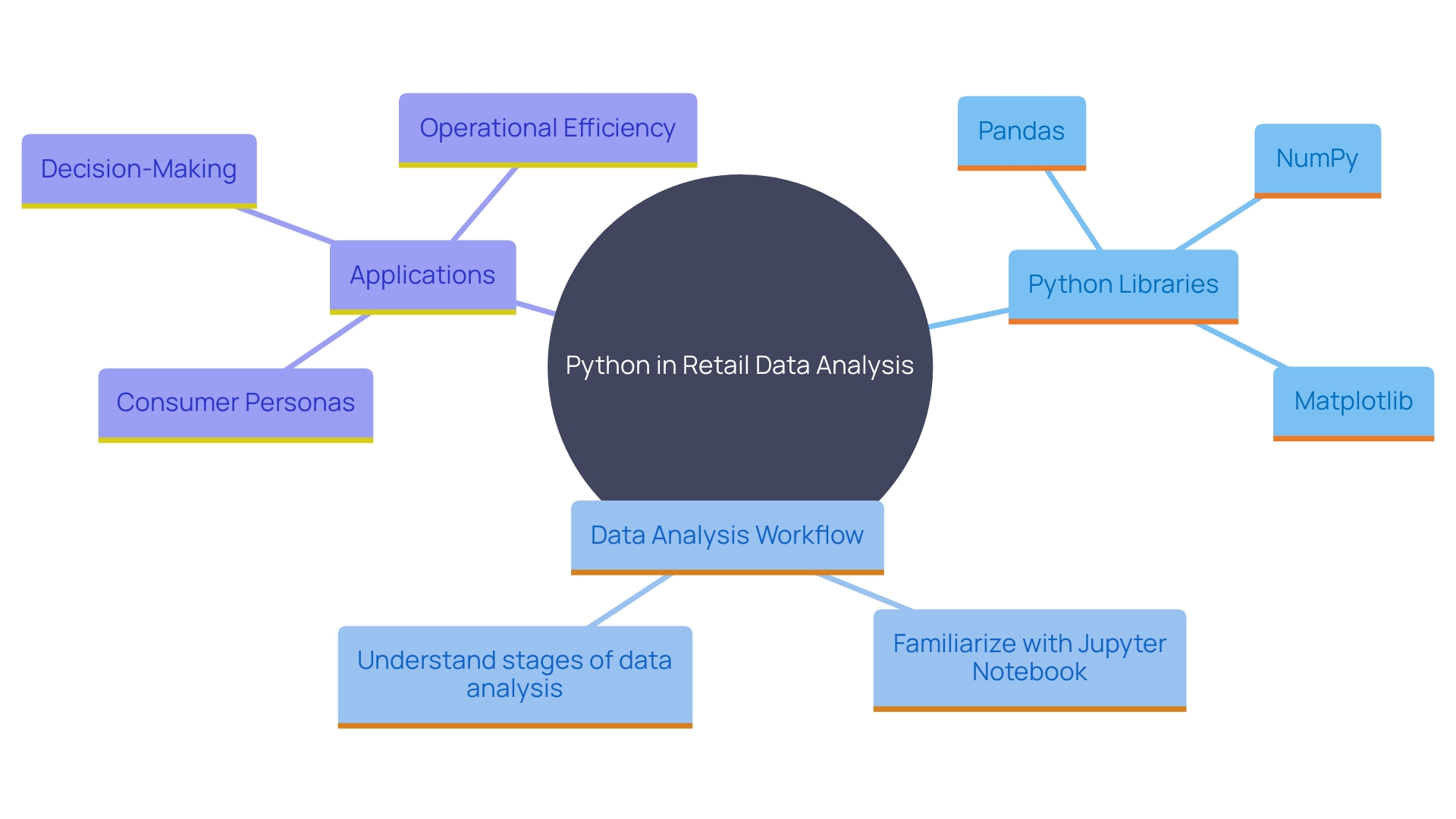
Streamlining Accounts Payable with AP Software
Adopting accounts payable software can transform the invoicing, approval, and payment methods in your organization. This system not only reduces processing time but also improves accuracy and optimizes cash flow management. According to a study by PYMNTS Intelligence and American Express, 29% of firms have already automated their accounts payable and receivable processes, witnessing significant benefits such as streamlined operations and improved financial accuracy.
Automated reminders and tracking features ensure no payments are overlooked, fostering better vendor relationships. Chris Macksey’s accounting firm, Prix Fixe, serves as a prime example of this transformation. By implementing automated processes, they saved 5 to 10 hours of work per client during end-of-year audits, dramatically improving efficiency and client satisfaction.
Furthermore, the increase in productivity from mechanization is unmatched. As experts indicate, assigning simpler tasks to AI enables your skilled personnel to concentrate on more complex work, improving overall performance. Delivery Hero, for example, greatly diminished their IT workload by streamlining account recovery procedures, highlighting the extensive possibilities of mechanization in various sectors.
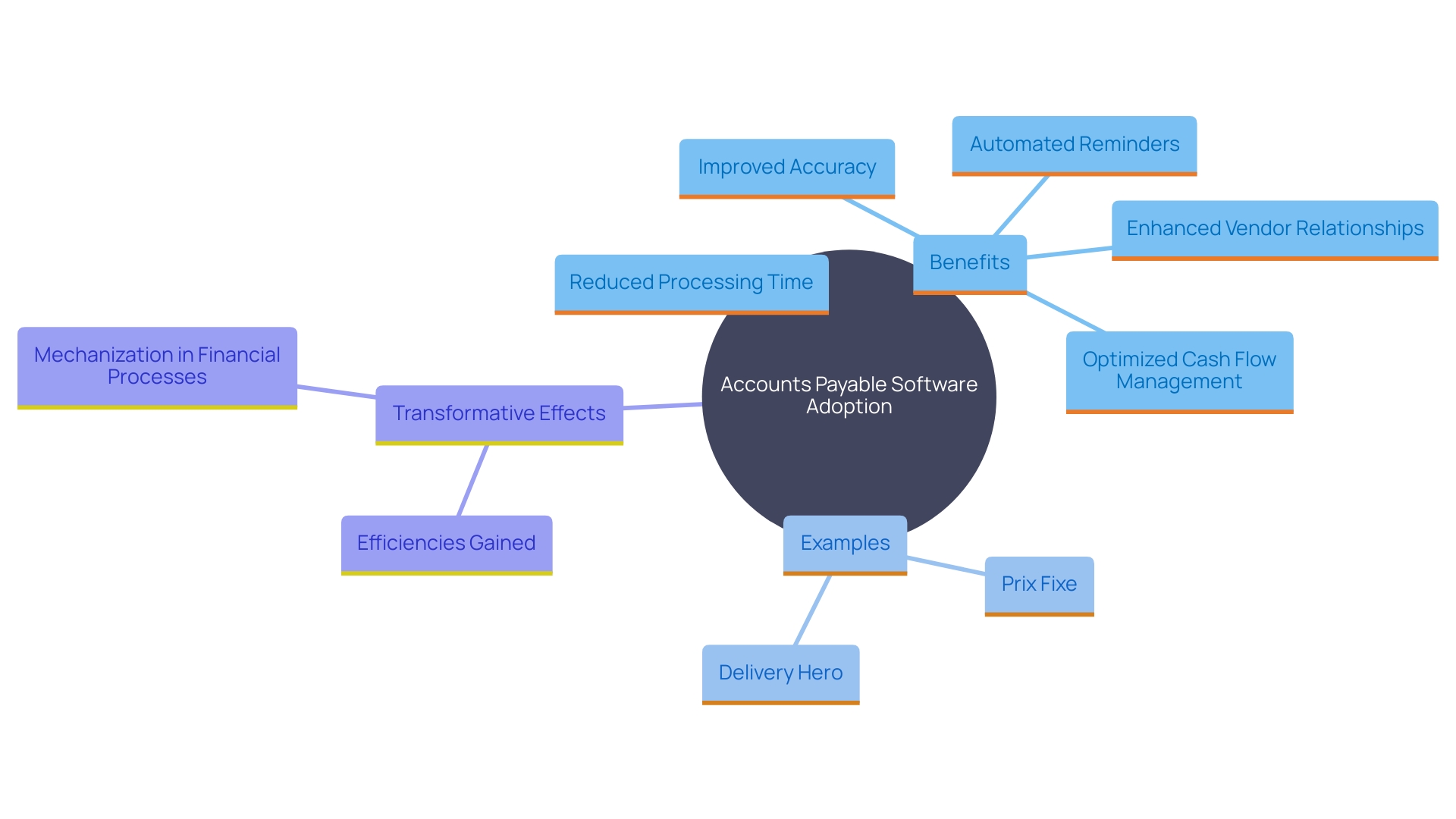
Automating CRM Workflows for Enhanced Customer Management
Incorporating mechanization within your Customer Relationship Management (CRM) system can transform customer interactions by making them more efficient and personalized. Automated follow-ups ensure that no potential customer slips through the cracks, while lead scoring helps prioritize efforts on the most promising opportunities. Personalized marketing campaigns, tailored through AI, adapt to individual customer behaviors and preferences, enhancing engagement and loyalty. As Vivek Sharma, CEO at Movable Ink, highlights, Ai’s ability to automatically tailor campaigns based on shifting customer behaviors can fundamentally change how businesses interact with their customers. This degree of mechanization not only saves time but also enables your team to concentrate on strategic initiatives, ultimately enhancing productivity and job satisfaction. In 2024, 94% of corporate executives prefer a unified platform for app integration and process automation, underscoring the growing importance of streamlined operations. Embracing these advancements in CRM technology can provide a significant competitive edge by improving customer experience and operational efficiency.

Leveraging Zapier for Seamless Integration and Automation
Zapier empowers businesses to seamlessly connect over 6000 apps and automate workflows without the need for coding expertise. By creating ‘Zaps,’ users can automate repetitive tasks such as information entry, email notifications, and file organization, drastically enhancing productivity across departments. Oleg, a specialist in process optimization, emphasizes how Zapier’s user-friendly platform enabled him to reduce operational expenses by 89 times while enhancing data processing capabilities. This capability is essential, particularly in light of the swift expansion in the industrial control market, anticipated to reach $264.69 billion by 2026. Zapier’s development from a workflow tool to a comprehensive system for streamlining processes allows both small business owners and large enterprises to innovate and execute tasks efficiently.
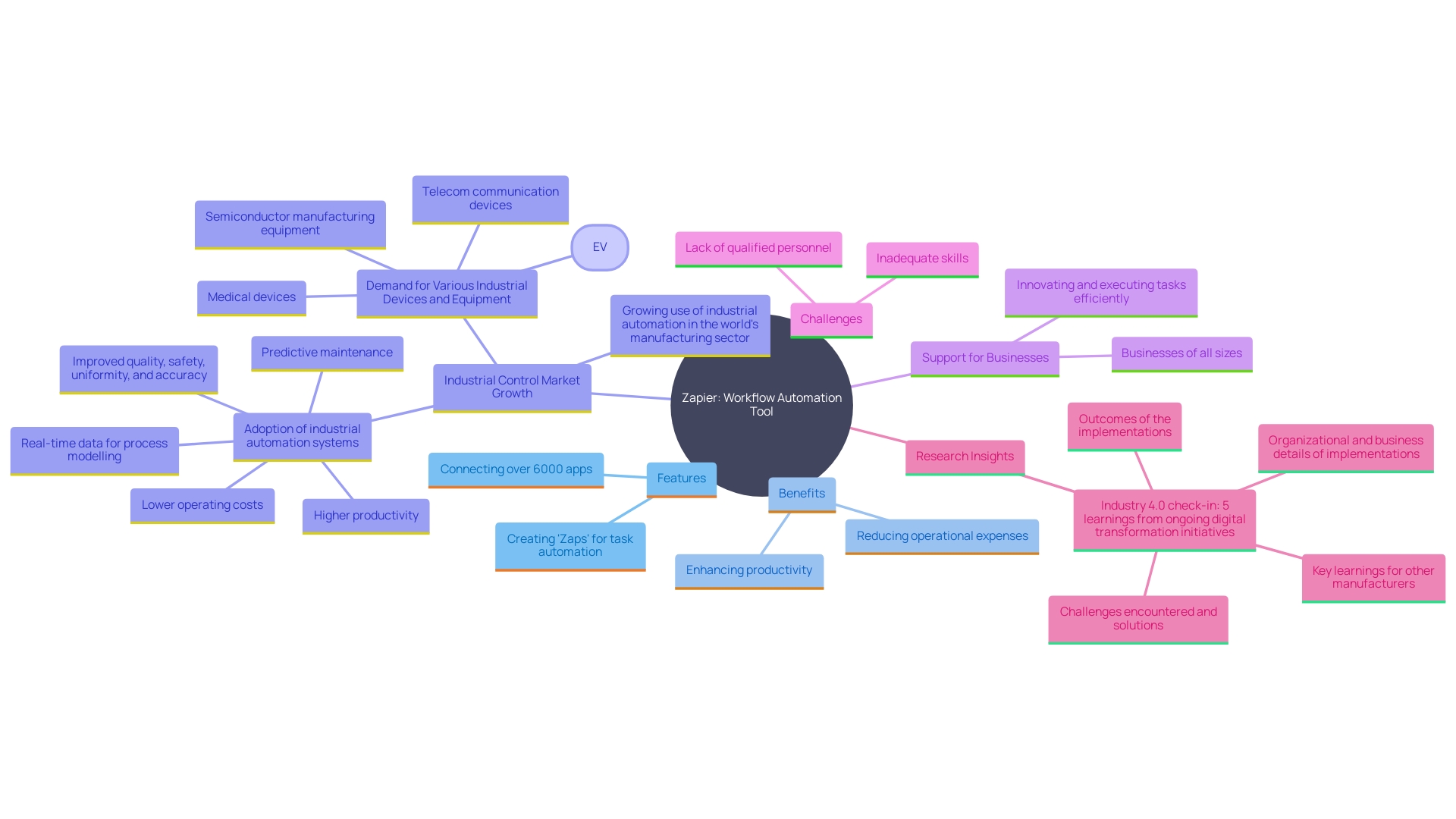
Implementing AI-Driven Marketing Automation
Harness AI-driven tools to revolutionize your marketing efforts at scale. By leveraging advanced automation software, you can analyze customer behavior, segment audiences effectively, and deliver highly targeted campaigns. This not only enhances engagement and conversion rates but also allows marketing teams to focus on strategic initiatives.
AI’s role in marketing has become indispensable, with 42% of small companies adopting AI tools, according to Pipedrive’s Annual State of Sales and Marketing report. The integration of AI in marketing strategies has evolved rapidly, driven by the need to stay ahead in a dynamic and competitive landscape. As noted by industry experts, ‘AI technology implementation – identify the right tools for your AI initiatives, and establish methods and processes to achieve reliable MLOps and ModelOps.’
Recent acquisitions, such as Siteimprove’s acquisition of MarketMuse, highlight the growing trend of integrating AI to optimize content strategies and execution. This ensures that content is not only generated efficiently but also optimized for both traditional and AI-driven search engines.
Data-driven marketing maturity is a continuous journey, requiring brands to embed data deeply into their operations and deliver technology-enhanced consumer experiences. Despite the challenges, AI and generative AI (GenAI) present significant opportunities for brands to enhance their productivity, profitability, and competitiveness. In fact, marketers have ranked AI implementation as their top priority and challenge, underscoring its pivotal role in shaping the future of marketing.
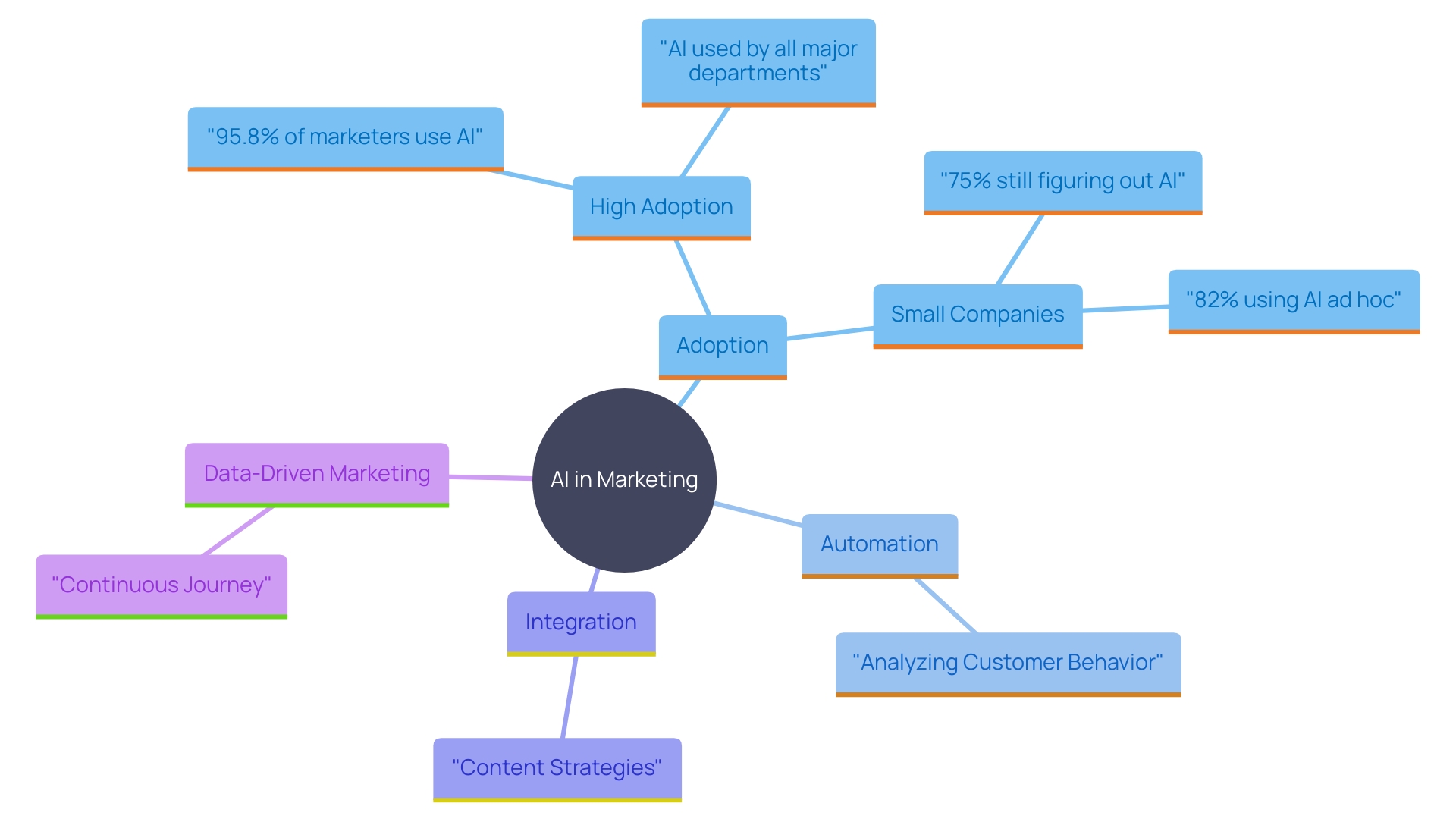
Automating Content Distribution with Sponsored Content
Improve your content marketing plan by utilizing technology to distribute sponsored material effortlessly across various platforms. This approach guarantees consistent messaging, maximizes reach, and saves valuable time, enabling marketing teams to focus on crafting high-quality content. By automating each step of the content dissemination workflow, such as generating ad variations for different platforms like Facebook, marketing departments can handle hundreds of creative assets efficiently. The recent acquisition of MarketMuse by Siteimprove, aimed at integrating content creation and strategy, exemplifies the industry’s shift towards reducing content waste and optimizing for both traditional and AI-driven search engines. This transformation in content marketing is part of a broader trend where legacy methodologies are being replaced by more efficient, automated workflows to meet the demands of modern digital media.
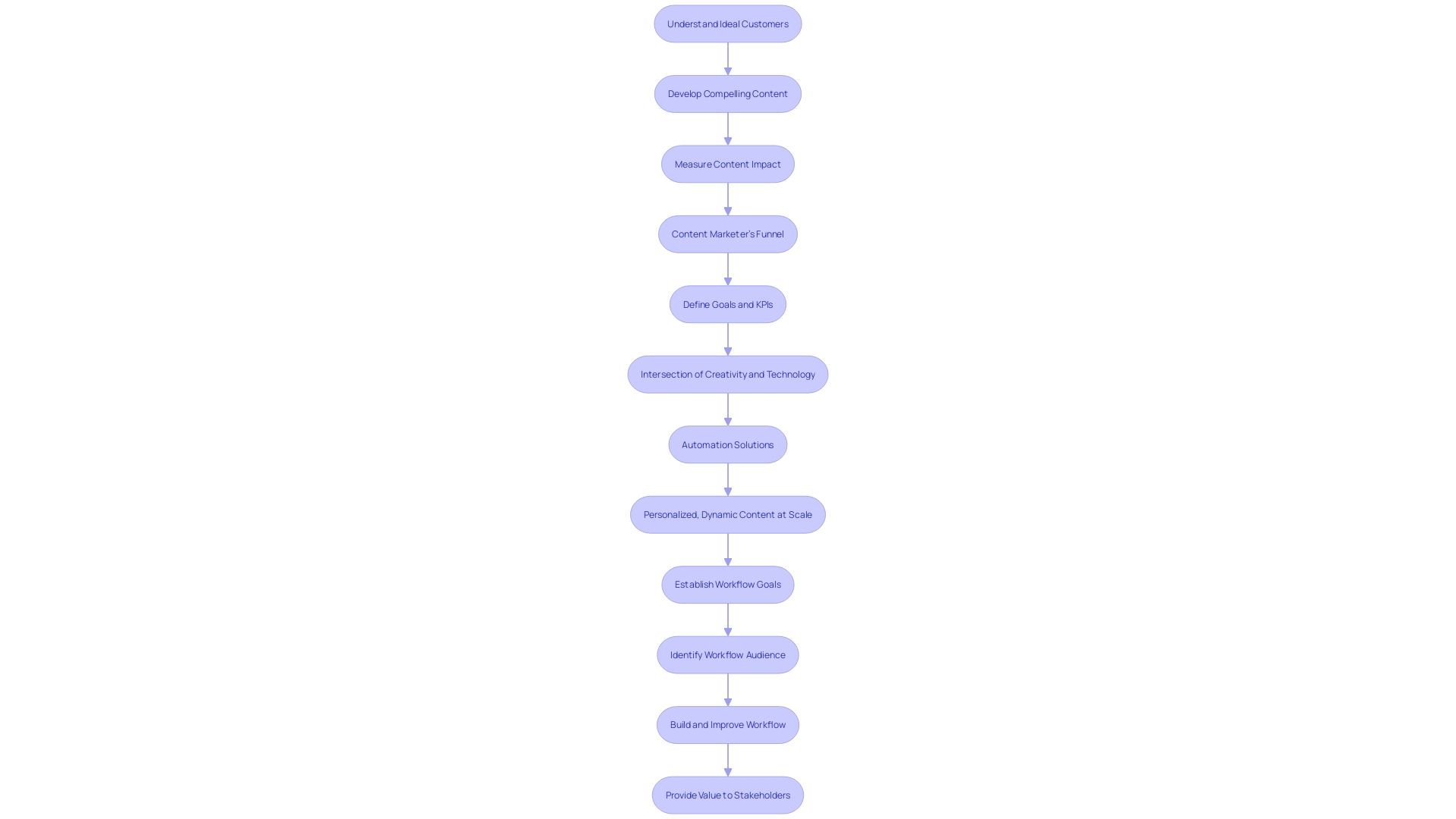
Enhancing Business Efficiency with Workflow Automation Tools
Utilizing workflow management tools is essential for streamlining and optimizing business processes. These advanced tools employ software applications, algorithms, and predefined rules to automate repetitive tasks, thereby minimizing manual intervention and reducing the risk of human error. This approach facilitates seamless communication and orchestrates the flow of work within an organization, ensuring that tasks are completed efficiently and consistently.
‘Workflow mechanization encompasses a range of solutions tailored to various sectors, including IT, finance, healthcare, and manufacturing.’. The choice between no-code, low-code, or high-code solutions depends on the user type, use cases, and complexity required. For example, DevOps groups could gain from specialized systems for mechanization, while wider organizational requirements might require general mechanization solutions.
The effectiveness of workflow streamlining is evidenced by its widespread adoption. A report from Zapier highlights that nearly all workers in smaller businesses handle repetitive tasks like sending notifications or managing permissions. Furthermore, mechanization plays a crucial role in contemporary software development, with engineering and IT departments overseeing 40% of an organization’s mechanized processes.
The industry’s growth further highlights its significance. Valued at $5.1 billion in 2022, it is projected to reach $7.1 billion by 2028. This surge is driven by the need to enhance efficiency and productivity across various fields, including research laboratories, where automation accelerates data analysis, streamlines operations, and reduces costs. As organizations continue to adopt digital transformation, placing technology at the center of end-to-end operations enables employees to concentrate on high-value tasks, thereby enhancing overall organizational performance.
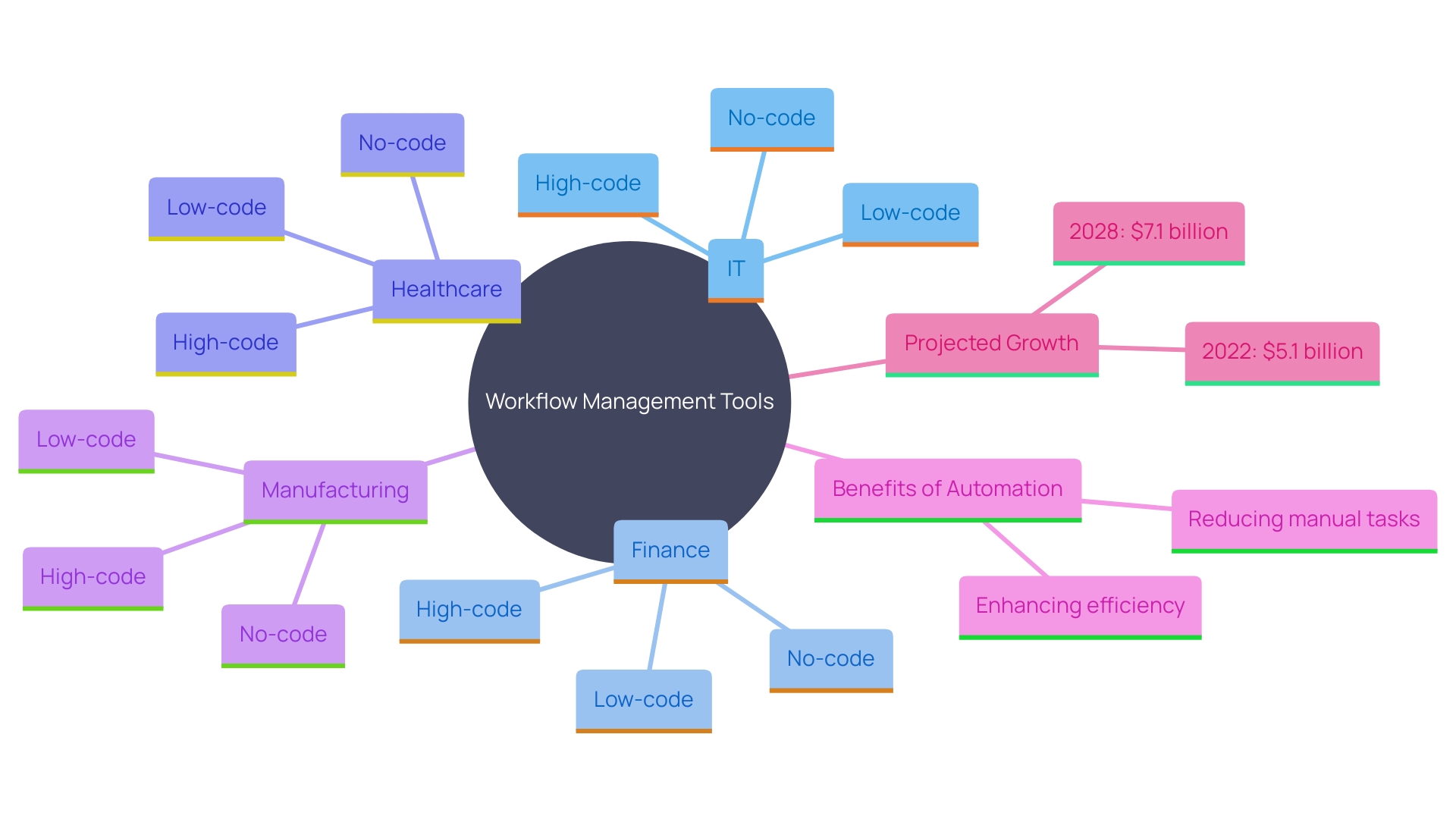
Using SaaS Solutions for Automated Business Processes
Embrace Software as a Service (SaaS) solutions to automate various organizational processes, including project management, HR tasks, and customer support. SaaS platforms provide scalable, cloud-based solutions that can swiftly adjust to changing organizational needs. By leveraging SaaS, companies can ensure clean, usable data, which is crucial for accurate analysis and operational efficiency. As mechanization becomes integral to modern business, statistics show that 83% of IT leaders believe workflow mechanization is essential for digital transformation. Furthermore, mechanization has improved jobs for 90% of knowledge workers, enhancing productivity for 66% of them. For instance, Specsavers, managing a complex global supply chain, developed in-house technologies to streamline operations and enhance customer experience. This exemplifies how SaaS can play a pivotal role in overcoming operational challenges and boosting efficiency.
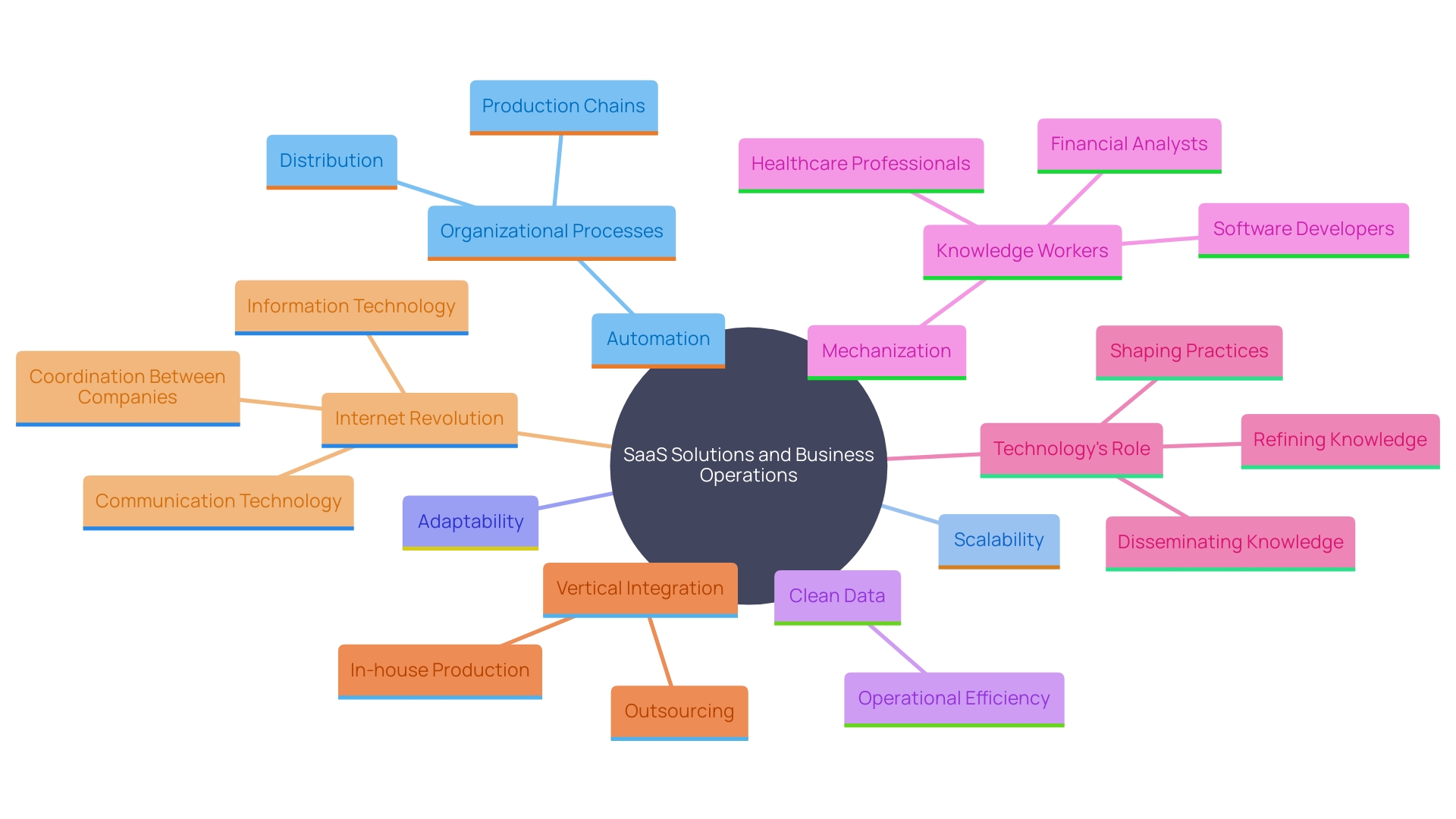
Integrating Automation in Sales and Marketing Strategies
Integrate automation into your sales and marketing strategies to significantly enhance lead generation and nurturing. By automating tasks such as email outreach, follow-ups, and reporting, companies can experience remarkable improvements in response times and sales performance. Employing generative AI (gen AI), which has experienced extensive integration across different organizational functions, can further enhance these processes. ‘Gen Ai’s promise of speed and efficiency in analyzing vast amounts of data, coupled with its precision in identifying patterns and insights that manual research might overlook, makes it an invaluable tool for today’s enterprises.’.
For instance, companies that have implemented gen AI in their B2B sales report notable outcomes and a real impact on their initial builds, indicating that the wide scale adoption of gen AI is not just probable but inevitable. Furthermore, sales automation software has emerged as a game-changer, particularly for small businesses, by increasing efficiency and driving growth. These tools manage leads, facilitate communication with customers, and track sales data, ultimately boosting productivity and revenue.
As highlighted by industry thought leaders, effective communication and collaboration are crucial for successful marketing strategies. Leveraging automated tools to streamline these processes can create meaningful connections with your audience and foster trust-based relationships. Prioritizing customer satisfaction and delivering high-quality services are essential strategies for creating positive experiences, especially in sectors like healthcare. Automation enables organizations to accomplish these objectives more effectively, ensuring they stay competitive in an AI-driven world.
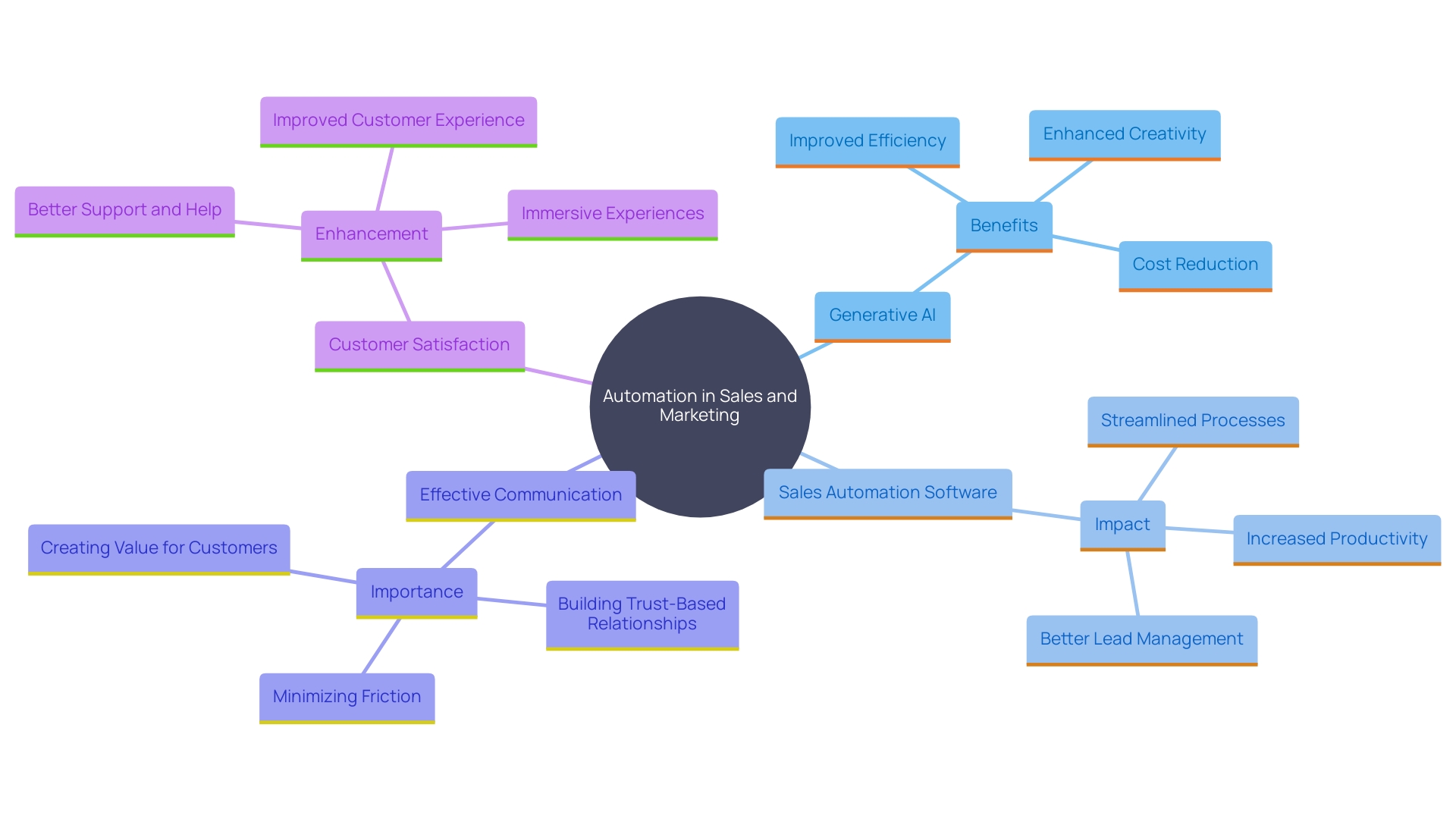
Scaling Business Operations with Advanced Automation Techniques
Harness the full potential of Robotic Process Automation (RPA) to elevate operational processes to new heights. By employing RPA to handle repetitive tasks across various departments, organizations can dramatically increase efficiency, cut costs, and deploy resources with greater precision. For example, the Louvre Hotels Group saved an astounding 574 hours per month by automating rate code maintenance with RobosizeME’s cutting-edge solutions. This not only showcases the transformative power of RPA but also underscores its vital role in streamlining workflows. As the CEO of Automation Anywhere aptly put it, “As AI and automation converge, it’s not unlike the birth of the PC or the internet—a moment in history that will reshape our world irreversibly.” Embracing RPA allows businesses to focus on strategic growth areas, leveraging automation to stay competitive and innovative in a rapidly evolving market.
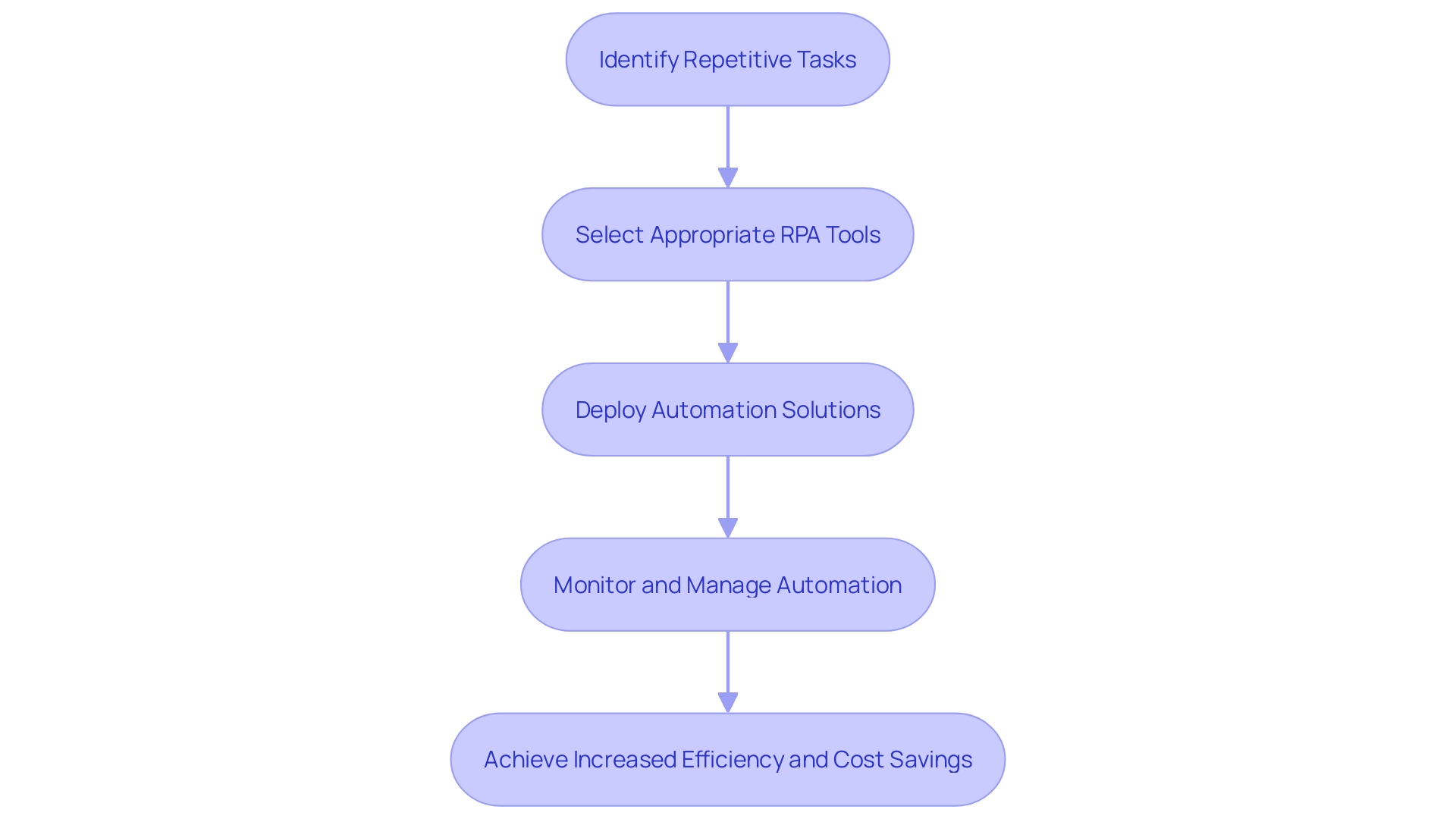
Conclusion
The integration of automation technologies is essential for Directors of Operations Efficiency aiming to enhance business performance. Utilizing Python for automated data analysis transforms large datasets into actionable insights, reducing human error and accelerating decision-making.
Implementing accounts payable software streamlines financial processes, improving accuracy and fostering better vendor relationships while freeing up resources for more complex tasks. This ultimately enhances client satisfaction.
Automating Customer Relationship Management (CRM) workflows significantly improves customer interactions through automated follow-ups and AI-driven personalized marketing campaigns, boosting engagement and loyalty. Tools like Zapier facilitate seamless app integration, simplifying the automation of repetitive tasks.
AI-driven marketing automation and content distribution further optimize engagement. By analyzing customer behavior and deploying targeted campaigns, businesses can refine their marketing strategies. SaaS solutions are also key in automating diverse processes, allowing organizations to adapt swiftly to evolving needs while maintaining efficiency.
Robotic Process Automation (RPA) provides a critical opportunity to scale operations by handling repetitive tasks, enabling teams to focus on strategic initiatives that drive growth. Embracing these automation solutions is vital for maintaining a competitive edge in a dynamic marketplace, empowering businesses to enhance productivity, accuracy, and overall performance.

